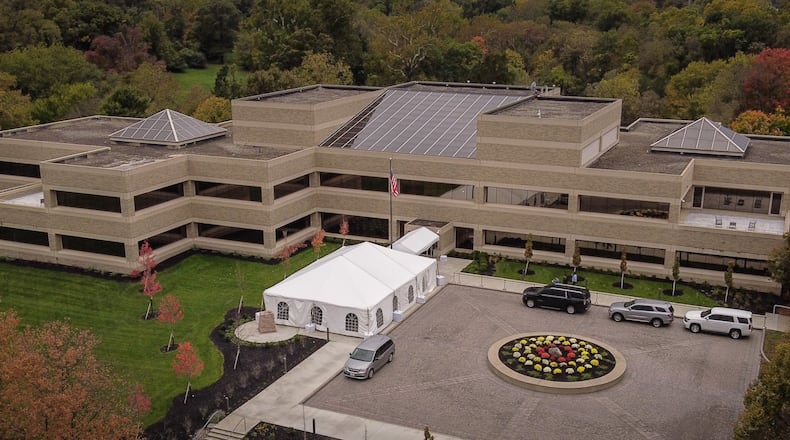“The estimated bill impact from this plan for a residential customer using 1,000 kilowatt hours (kWh) a month is a reduction of $2.71,” the PUCO said in a statement. “However, AES Ohio will also implement a previously authorized distribution rate increase frozen during the pendency of this ESP.”
An ESP is an operating plan that sets prices for the generation of electricity, and it may cover investments in distribution and updates to the electric grid.
The vote by the five-member commission was unanimous.
“The settlement we approve today will serve to improve the service quality and reliability of the grid across AES Ohio’s service territory,” PUCO Chair Jenifer French said in a statement. “Incentivizing off‐peak electric vehicle charging, economic development opportunities and customer and community assistance programs are exciting opportunities for Ohio consumers.”
An increase of some kind was expected. Earlier this year, Sharon Schroder, regulatory affairs director for AES Ohio, testified before state regulators that implementing the company’s ESP settlement would initially result in a $1.49 monthly decrease — but coupled with implementing new distribution rates of approximately $8, the result would be a net increase of $6 to $6.50 per month for a resident using 1,000 kilowatt-hours of electricity.
Schroder also testified this year that the utility hasn’t been able to afford needed investments in distribution infrastructure, and has not been able to manage vegetation on its distribution lines consistent with company plans.
“As the commission (the PUCO) has recognized, AES Ohio has been operating under financial stress for years,” Schroder testified.
A spokesman for the PUCO Wednesday noted that rates may rise further, as AES Ohio seeks to recover future costs related to capital investments in its distribution system.
“Approval of the ESP settlement represents a significant milestone for AES Ohio to create meaningful reliability improvements while supporting customer needs and the rapid growth of the Dayton region,” Ahmed Pasha, acting AES president, U.S. utilities, said after the vote. “We are appreciative of the efforts and collaboration among our stakeholders to reach this settlement for the benefit of our customers.”
The plan calls for the company to contribute $150,000 of shareholder funds to its “Gift of Power” program for emergency relief to customers facing disconnection due to financial hardship.
It also calls for elimination of the $25 reconnection-of-meter charge for customers with smart meters.
The electric company filed a settlement of its ESP in April, reached after negotiating with PUCO staff and interested parties, such as the city of Dayton and big power users like Kroger, the University of Dayton and the Ohio Manufacturing Association, among others.
The Ohio Consumers’ Counsel Office recommended that PUCO commissioners reject the settlement and minimize any rate increase.
“This is a bad time for a rate increase, as inflation and high energy prices are already putting a strain on household budgets,” the counsel’s office told the Dayton Daily News before the PUCO’s vote Wednesday.
After the vote, the counsel’s office was equally critical, saying the new plan has consumers subsidizing two aging coal plants, one in Ohio and the other in Indiana.
“Ohio is supposedly a state where power plants are meant to operate without government involvement. But AES (and AEP and Duke) have been enjoying corporate welfare, courtesy of state government, for subsidies at consumer expense” for the coal facilities, the office said.
There are generally two parts to residential electric bills, fees for distribution (or delivery) and supply. (There can also be fixed fees and other charges.)
If you live in a community that is part of an aggregation pact seeking lower electric rates, you likely still saw rising energy prices last year. Aggregation programs typically do not lower distribution rates, only supply charges. Distribution charges apply to all customers.
To take one local aggregation program as an example, the city of Dayton bought electricity supply at $0.0965 per kilowatt-hour (kWh) in June at a time when AES Ohio set its standard service offer starting at $0.108.
Energy generation rates are set by competitive auctions.
AES Ohio first applied to the PUCO for the new ESP last September.
AES Ohio provides electric transmission and distribution service to more than 527,000 customers across its 6,000-square-mile service territory in west central Ohio.
About the Author

